-
One month after launching a mobile-first site UX with Shopify, Merchology achieved a 40% lift in mobile conversion rates
-
Improving image quality and product descriptions — as well as customizing its checkout — contributed to a 30% lift in conversions for Peepers Eyewear
-
After one month on Shopify, LeSportsac increased conversion rates by 7%, AOV 20%, and sales 12% with AI personalization
For consumers, fashion is all about the first impression — boosting confidence on a first date, at a job interview, or just in daily life. It communicates who you are and how you want others to perceive you.
If you run an online fashion business, the same is true … only more so.
Even trickier, every touchpoint along your customer’s journey gives visitors a new first impression:
-
Attracting visitors with your advertising
-
Enticing them to and through your product pages
-
Delighting them with a fast, easy, and stylish user experience
Defining Conversion Rate Optimization
Broadly speaking, conversion rate optimization (CRO) involves ongoing, incremental site improvements to get visitors to take actions that your company defines as a “conversion.” This includes everything from signing up for your email newsletter, sharing a product on social, opting into your loyalty program, writing a review, and — of course — completing a purchase.
Fashion CRO is both an art and a science which requires online businesses to continuously test and optimize design, usability, product descriptions, price points, offers, and more — all while adapting to consumer behaviors and preferences over time.
So, where should you start?
1. Benchmark Your Conversion Rates
Improving your fashion ecommerce conversion rates starts with knowing, first, the driving metrics of the industry at large and, second, how your own metrics stack up.
On the first front, four metrics matter most:
(1) Ecommerce fashion industry worldwide revenue
Overall, worldwide revenue is expected to increase from $481.2 billion in 2018 to $712.9 billion by 2022:

Data via Statista
(2) Ecommerce fashion worldwide revenue growth rate
Interestingly, while total market size is steadily climbing, worldwide revenue growth — i.e., compound annual growth rate (CAGR) — is slowing:
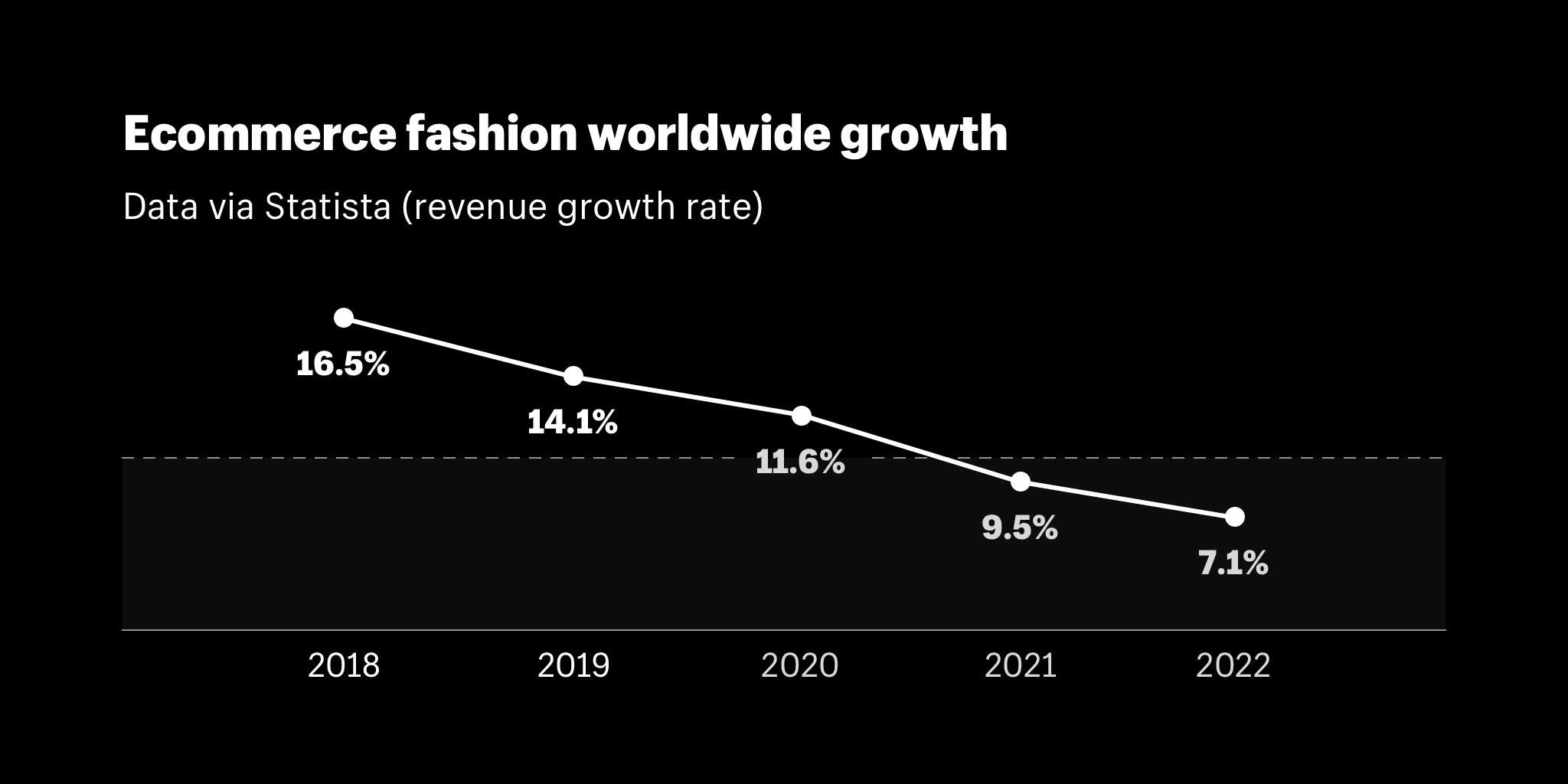
The cause of ecommerce fashion’s declining CAGR is Western-market saturation. This is especially glaring when you compare growth rates in the US, Europe, and China. By 2022, CAGR is expected to settle in at …
-
8.8% in the US
-
8.7% in Europe
-
14.1% in China
(3) Ecommerce conversion rates by device and location
Industry-wide revenue and growth rates are good things … but what about conversion rates themselves?

Data via Monetate
(4) Ecommerce fashion average order value
We can also go one step further into the average order value of ecommerce fashion thanks to data from Yotpo:
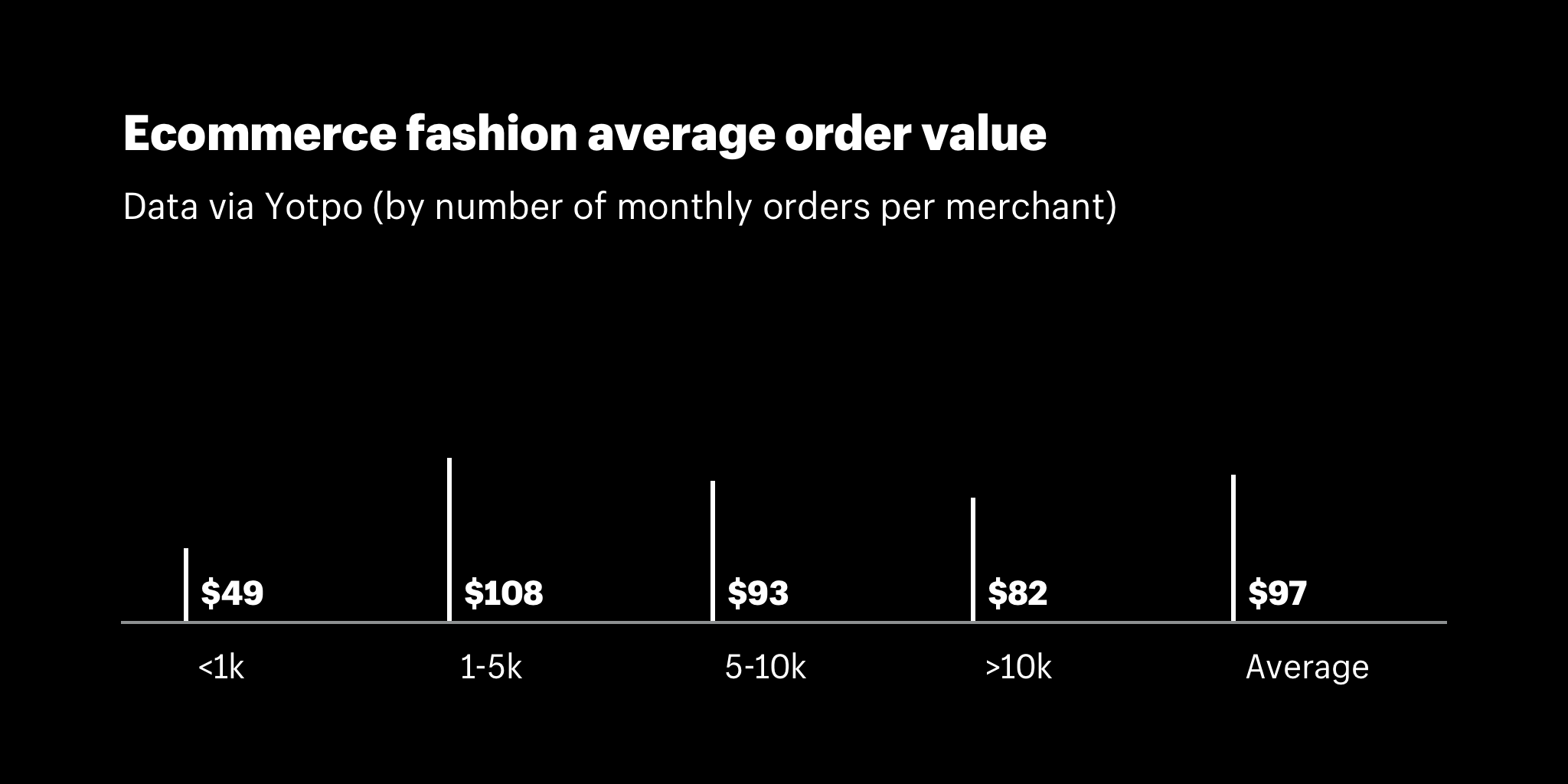
Unfortunately, the problem with relying on outside data, even from your industry, is brought to life perfectly by Shanelle Mullins in The Beginner’s Guide to Analyzing Shopify Reports and Analytics:
“What’s a good amount of monthly traffic? What’s a good conversion rate? What’s a good average order value? What’s a good …?
“There’s no real answer to these questions. There are, of course, industry benchmarks and averages that you can turn to, but they are often more interesting than actionable.
“It’s all about what’s good for you and your store.”
To benchmark your own conversion rates for your fashion website, at least two metrics should be prioritized:
(1) Online store conversion rate
Shopify’s internal dashboard will give you a big-picture view of your site’s conversion rate as well as each stage of your conversion funnel:
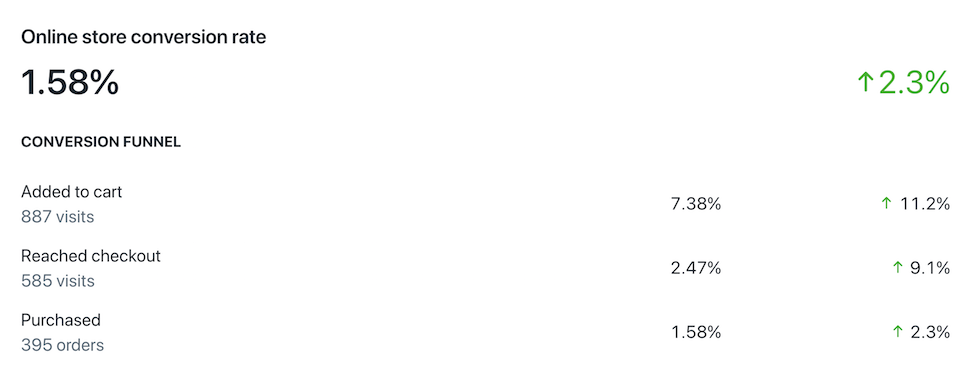
(2) Multi-channel conversion rates
For multi-channel ecommerce, you can use the custom Google Data Studio dashboards within our Data Analysis Course to measure (1) how new visitors compare to returning visitors as well as (2) how your sources and mediums (i.e., channels) perform:
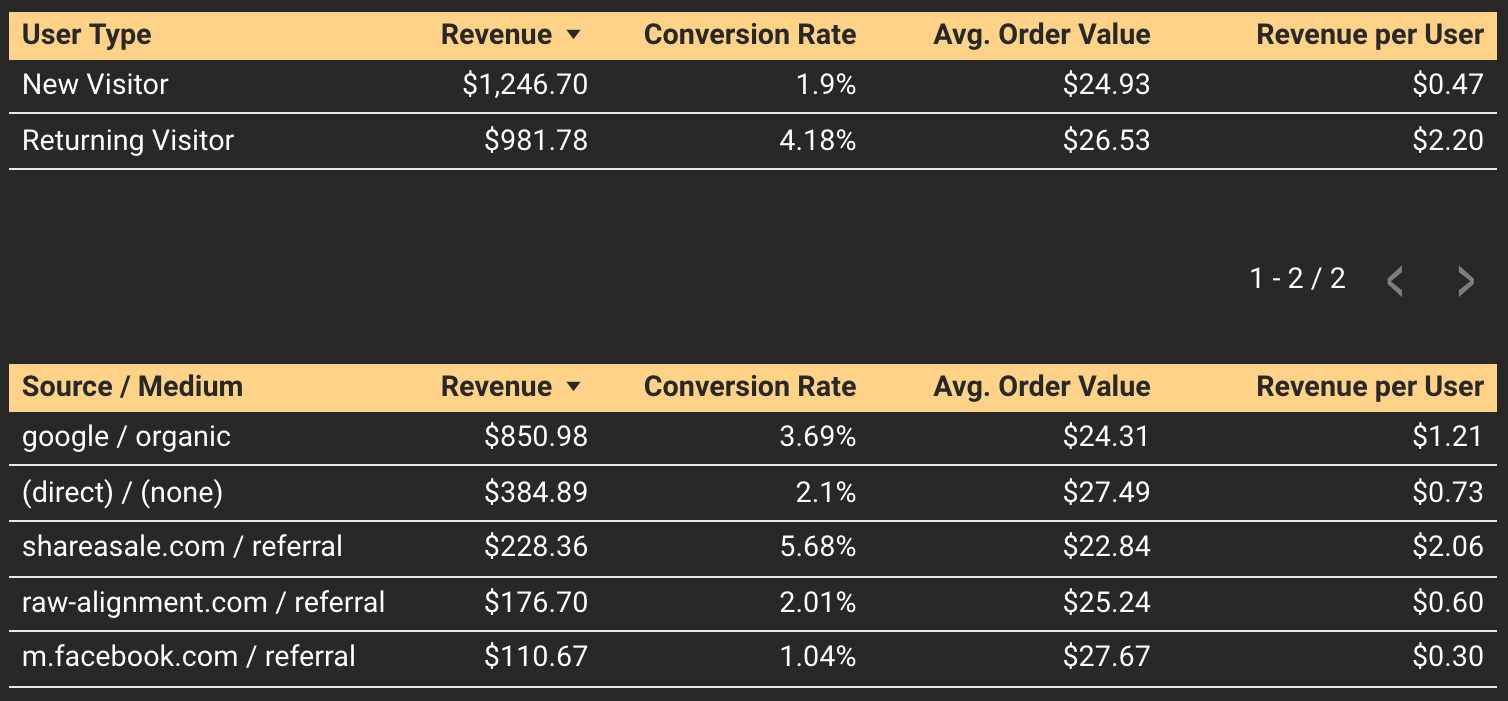
To go beyond benchmarking, take a look at the full Data Analysis Course available exclusively to Shopify merchants
Once you’ve stacked up the fashion retail industry standards with your store's current performance, it’s time to get optimizing …
2. Optimize for Mobile-First Experiences
While ecommerce sales are growing faster than retail store sales, it’s important to note that mobile commerce is projected to grow at a significantly faster rate in the coming years.
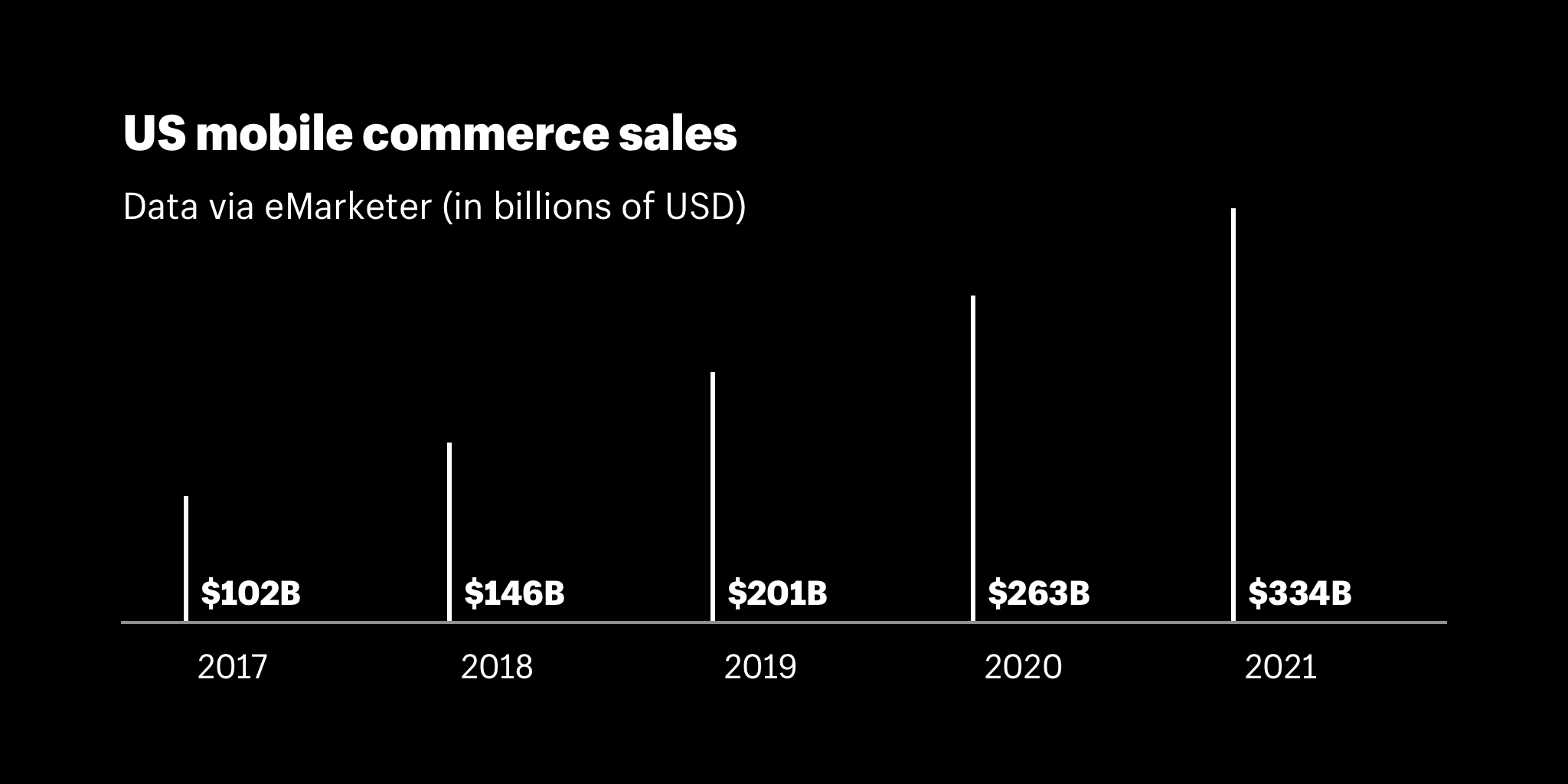
Even though smartphone conversions are currently half of those of desktop sales, that number is going to change rapidly as your competitors improve their mobile commerce experiences.
Likewise, a new Forrester Research report reveals that by 2021, mobile devices alone will influence $1.4 trillion in local retail sales.
High-volume fashion ecommerce brand Merchology recently replatformed with Shopify and optimized its site for a mobile-first experience.
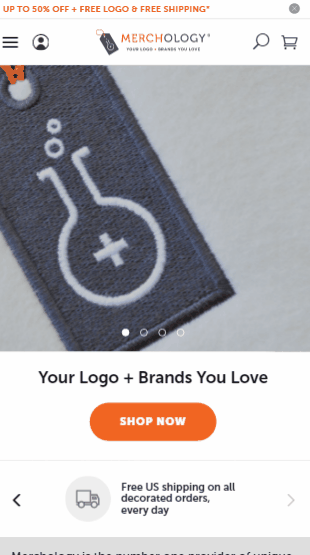
Within a month after the re-launch, the company made a more positive first impression with mobile customers and the site achieved:
-
340% YoY increase in revenue per mobile device
-
40% lift in mobile conversion rates
“Simplicity drives sales regardless of device,” says Nolan Goodman, VP Marketing at Merchology. “We’ve made it simple to order and checkout regardless of whether a customer is using a desktop computer, tablet, or mobile device.”
3. Improve Site Performance and Speed
When your site crashes during high volume shopping days like Black Friday, or your mobile site takes more than a few seconds to load, you run the risk of losing your customer’s attention and loyalty.
In fact, “79% of customers who report dissatisfaction with website performance are less likely to buy from that site again.”
After a Black Friday outage in 2016 cost SweetLegs six-figures in lost sales, the company decided to replatform with Shopify – just in time for the 2017 holiday shopping season.
“In about a 30-day turnaround, we were fully done, launched, up and running, orders coming in,” says Chris Pafiolis, founder of SweetLegs. “What we noticed was —the new Shopify site, no matter how hard we hammered it with our distributors, it did not go down.”
During Black Friday Cyber Monday 2017, the SweetLegs site handled 11,000 orders. Even more impressive, during the first two quarters of 2018, SweetLegs sales were up 40% year-over-year.
Slow Speeds Kill Your Conversion Rates
Your website speed can be either a blessing or a curse — it all depends on how fast your customers can load your pages on their browsers. According to Mobile 1st:
Slow pages are the number one issue that irate mobile users complain about — ranking even higher than site crashes.
Skilled aggregated data from 12 different case studies and found …

Data source and tips for improving ecommerce site performance here

Data source and tips for improving site speed can be found here
There are many ways to reduce the page load time on your fashion ecommerce site, including:
-
Compressing and reducing image file sizes
-
Leveraging a Content Delivery Network (CDN)
-
Minifying or improving HTML, JavaScript, and CSS on your site
For a breakdown of all of the ways to improve page speeds, including Shopify platform-specific optimizations, read: 15 Ways to Improve Ecommerce Site Performance for Faster Page Speed and Better Sales.
4. Create High-Quality Photos and Copy
While it is important to compress and reduce image file sizes for faster page load speeds, that doesn’t mean that they should look like crap.
Considering that people can’t touch or try on your products online, “you need to work twice as hard to make your products come alive via excellent photography and graphics,” says ConversionXL founder Peep Laja.
So you can’t rely on stock photography, or small, uninspiring product photos to convince your customers to buy.
After replatforming to Shopify, expressive eyewear brand Peepers (once featured in O Magazine) was able to showcase multiple, high-quality images of the same pair of eyeglasses – something that wasn’t possible on the previous platform the company was using.
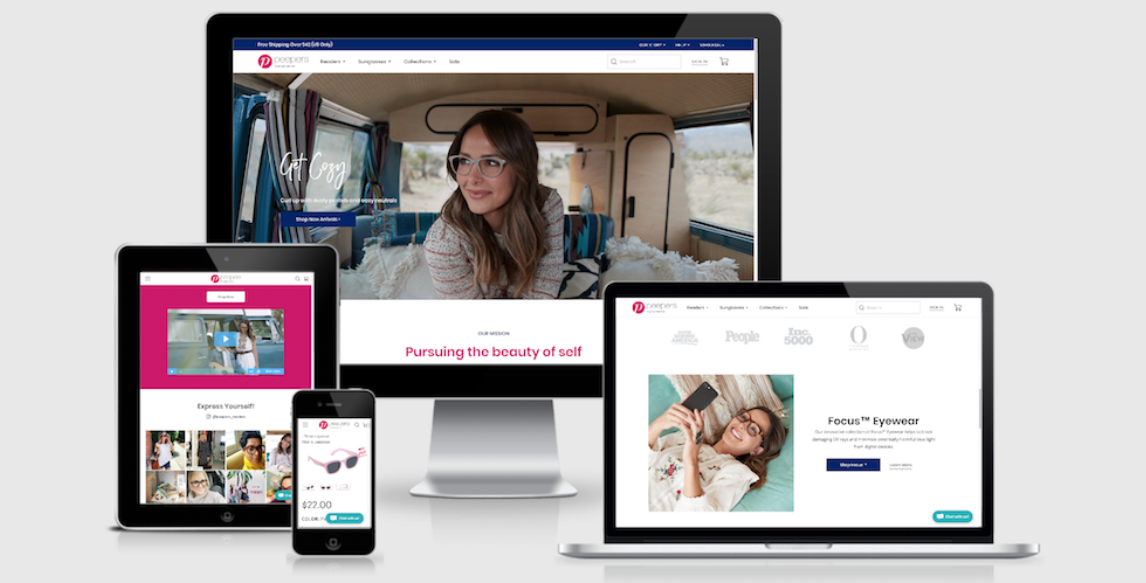
Peepers also reshot every product image on its site to produce larger, more vibrant photos. It was then able to make a more positive first impression and inspire more consumer confidence in its brand.
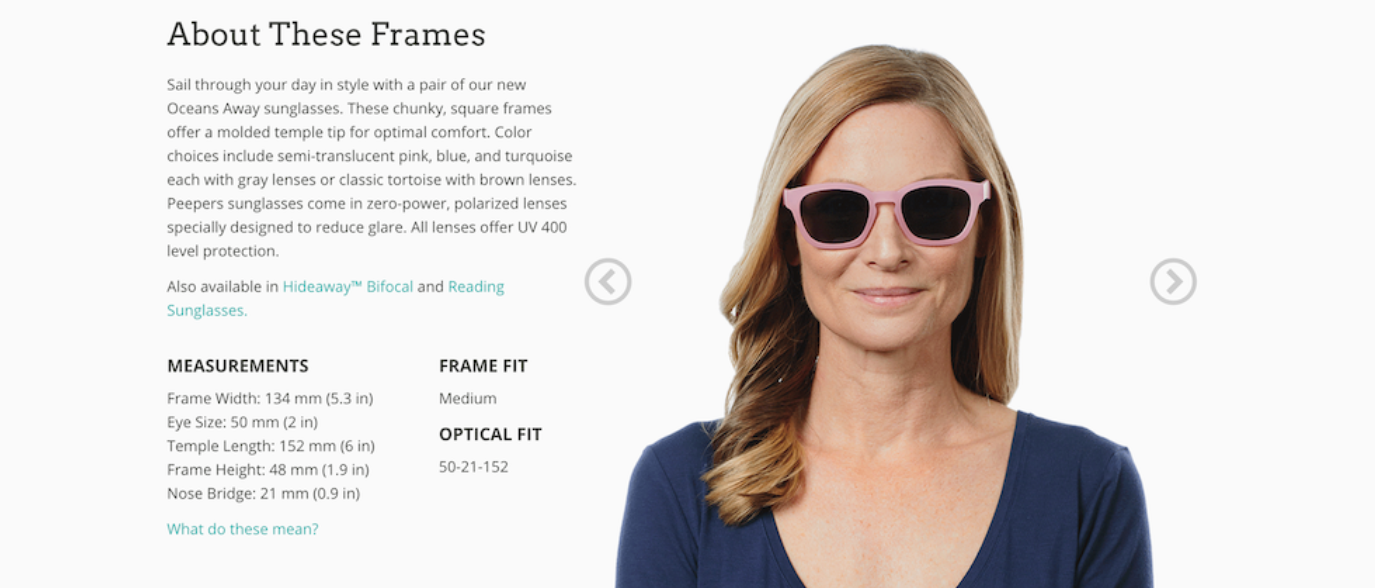
After Peepers wrote more compelling product descriptions, customers were more easily able to find and select the pair of eyeglasses they wanted to buy.
The image and product description quality improvements, via Shopify's website builder, contributed to a 30% increase in conversions. Customizing the customer checkout experience was also a contributing factor which we’ll get into shortly.
Since the company replatformed with Shopify, John Hart, ecommerce manager at Peepers says,
We see huge opportunities regarding improving conversion rates and making data-driven decisions that give customers exactly what they want.
5. Use a Platform That Tells Your Story in Pictures
The meteoric rise of social media platforms like Instagram and Pinterest enable brands to successfully tell their story via curated photos and imagery.
Ecommerce platforms must make it easy for businesses to both integrate their stores with these platforms, as well as use similar storytelling tactics on their website.
Red Dress Boutique recently replatformed with Shopify to tell their brand story online across platforms with inspiring imagery and unique sales opportunities — like ‘Shop the Look’ which enables customers to buy an entire outfit with just one click.
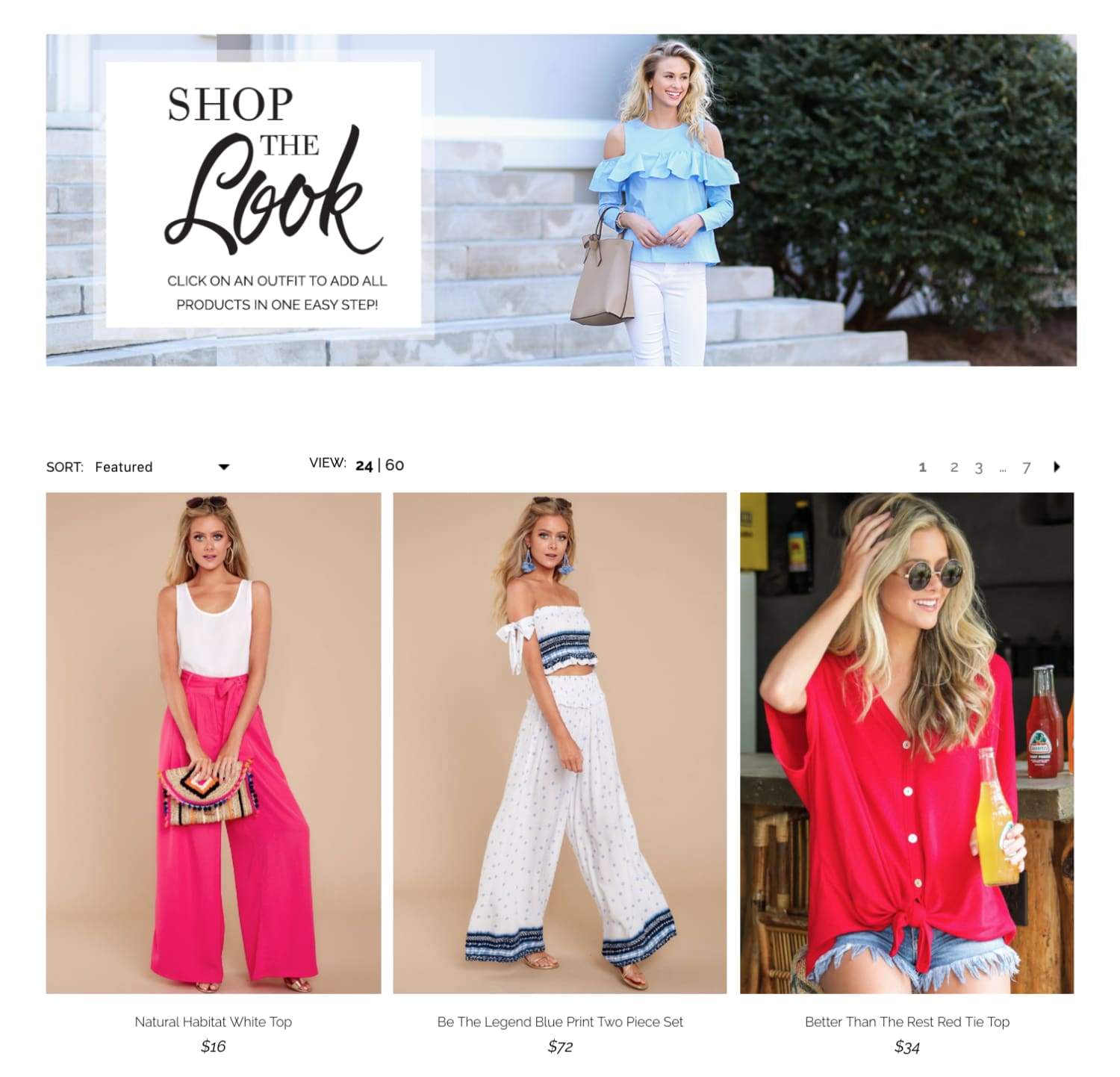
Since replatforming with Shopify, Red Dress Boutiques’ sales have grown by double digits year-over-year.
The ecommerce business integrates apps from Shopify’s app store to bring its brand story to life via high-quality fashion photography.
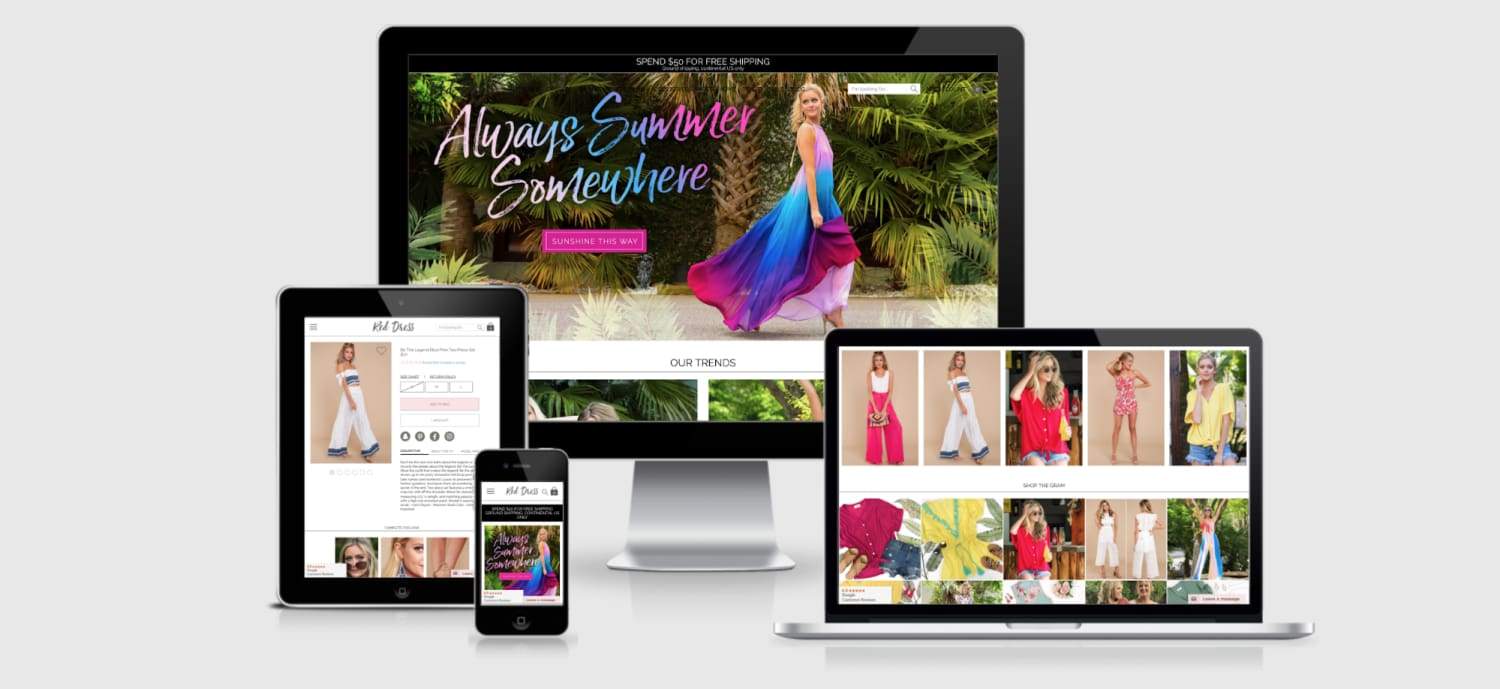
For example, Red Dress Boutique uses Swatchify which enables the company to easily create detailed variants of its most-popular products in true-to-life color ...
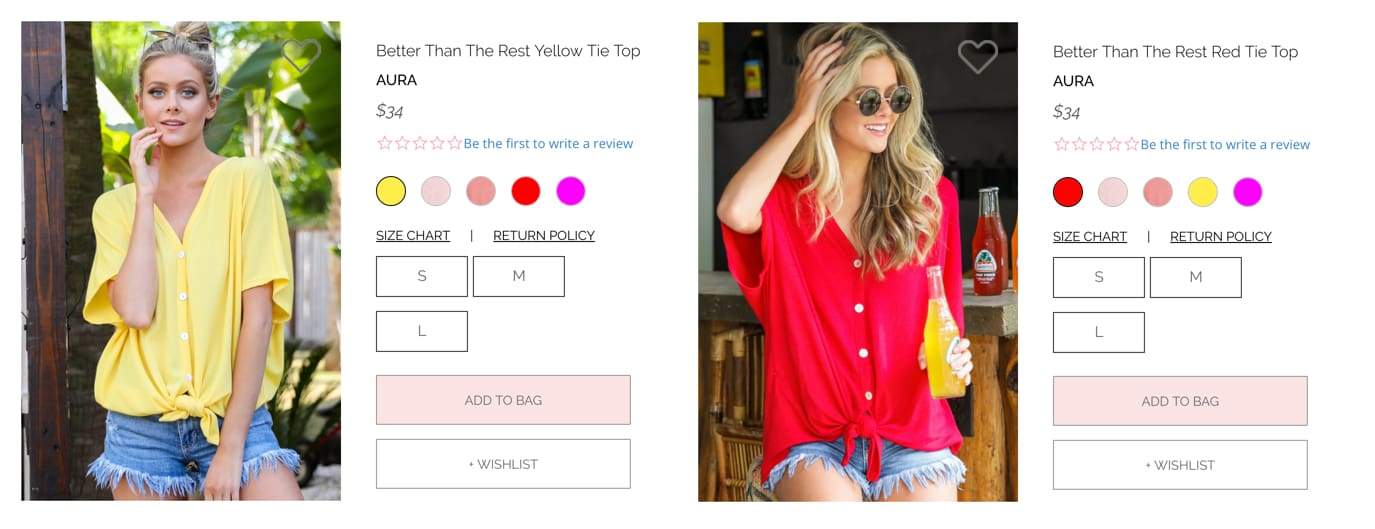
“There’s a lot of competition among retail right now, and I wanted to make sure we created something that distinctly set us apart from the competition,” says Diana Harbour, co-founder of Red Dress Boutique. “I spent two years scouting platforms, looking at reputation, ease of use, customization, and speed. Shopify blew me away in the demo.”
6. Generate Honest Ratings and Reviews
Ratings and reviews are other elements of your fashion ecommerce product pages that can help you close the deal with a customer. They don’t always need to be positive, either.
A study by Spiegel Research Center and PowerReviews found that “even negative online reviews can be helpful, as retailers that display online reviews see conversion rates rise by as much as 270 percent, with higher-priced and higher-consideration items benefiting more.”

Customers can perceive your site to be more credible if you include negative feedback or ratings. The study revealed:
Purchase likelihood peaks for products with average ratings between 4.0 and 4.7 on a five-star ratings system, with those closer to 5.0 viewed with skepticism as being ‘too good to be true.’
Within a year after integrating Yotpo with its Shopify site to increase user-generated ratings and reviews, multi-million dollar jewelry brand Pura Vida Bracelets discovered that:
-
The conversion rate of customers on-site who engage with reviews is 11.4% which is over 400% higher than customers who don't engage with reviews
-
The average order value of customers who engage with reviews is $34, which is about 11% higher than customers who don't engage with reviews
“Since we started our partnership with Yotpo,” says Griffin Thall, Co-founder at Pura Vida Bracelets, “we’ve been able to easily connect with, and leverage relationships with new and existing customers like never before.”
7. Refine Your Site Search Functionality
Cumulative data from Econsultancy found that visitors who use onsite search are 1.8x more likely to convert and can generate as much as 13.8%-40% of a store’s overall revenue.
For fashion sites, those results compound: search shoppers are 2.5X as likely to convert on desktop and tablet, and 3X on mobile.
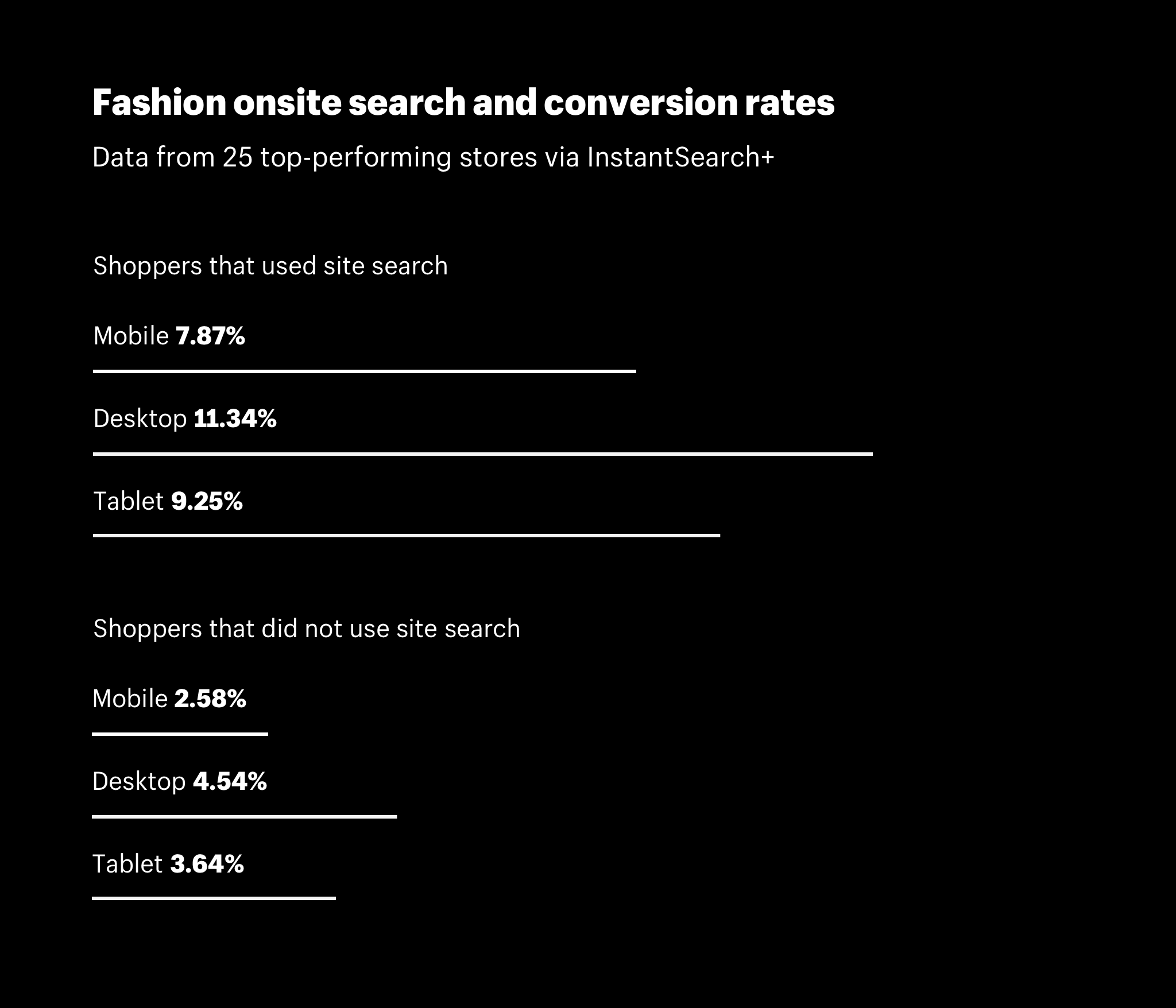
Why do site searchers convert so well?
To begin, it’s likely that shoppers who use site search exhibit an intent to buy.
Once this intent is put into words, shoppers are led quickly to what they need. Often, this means that they’re not necessarily shopping for “buttoned shirt” — they’re interested in products that meet a more narrowed down description, such as “red hooded flannels,” or “sale button down plaid blue.”
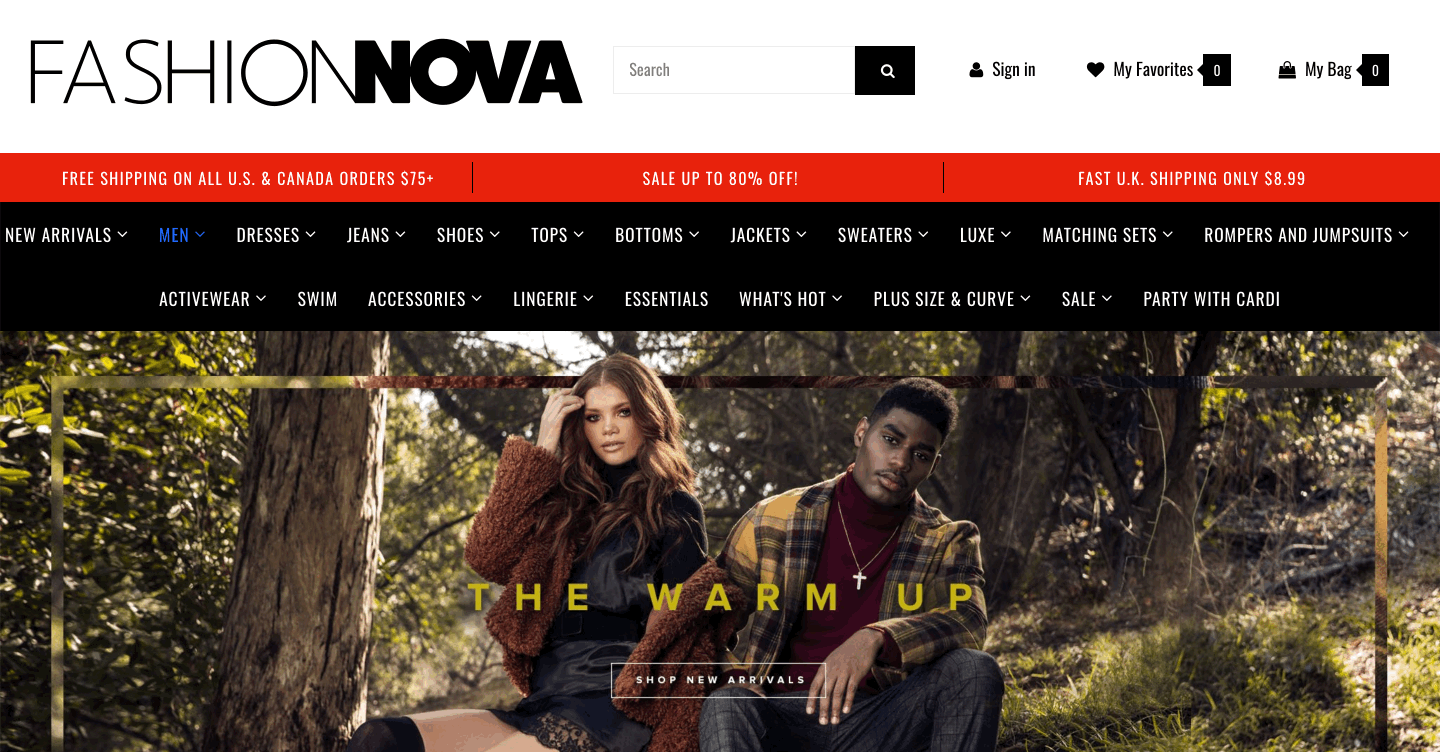
Fashion Nova uses InstantSearch+ to deliver incredibly detailed onsite search results and drive conversions
Site search doesn’t only indicate an intent to buy,” explains Zohar Gilad, CEO of InstantSearch+, “it can actually stir up such an intent.
“This typically happens when browsers (visitors with low or no intent) who couldn’t initially verbalize their intent, stumble upon something that can be verbalized, like a brand name or an item description. This then prompts them to begin searching actively, and develop intent.”
Some important site search features to offer on your site include:
-
Error tolerance for misspellings
-
Enhanced mobile search capabilities
-
Autocomplete for faster results and better suggestions
-
Merchandising capabilities, like including images and pricing
-
Natural language processing (e.g., synonyms that follow the way people speak – like using both “sofa” and “couch” to describe the same product)
8. Get Creative with Free Shipping Offers
While many merchants struggle with the cost of offering free shipping, it's still a huge advantage to offer it as a way to increase sales.
In fact, almost 80% of consumers say it’s why they are more likely to shop online. Almost 60% say they would cancel their order if the price of shipping was too high. And 39% will abandon their carts if free shipping is not offered.

Premium men’s activewear manufacturer Rhone Apparel recently began bundling some of its most popular items into curated kits as a solution to ensure it makes a profit on free shipping.
The company can control bundle sizes to use its ideal shipping containers, optimize shipping thresholds, and increase its conversions and revenue per user.
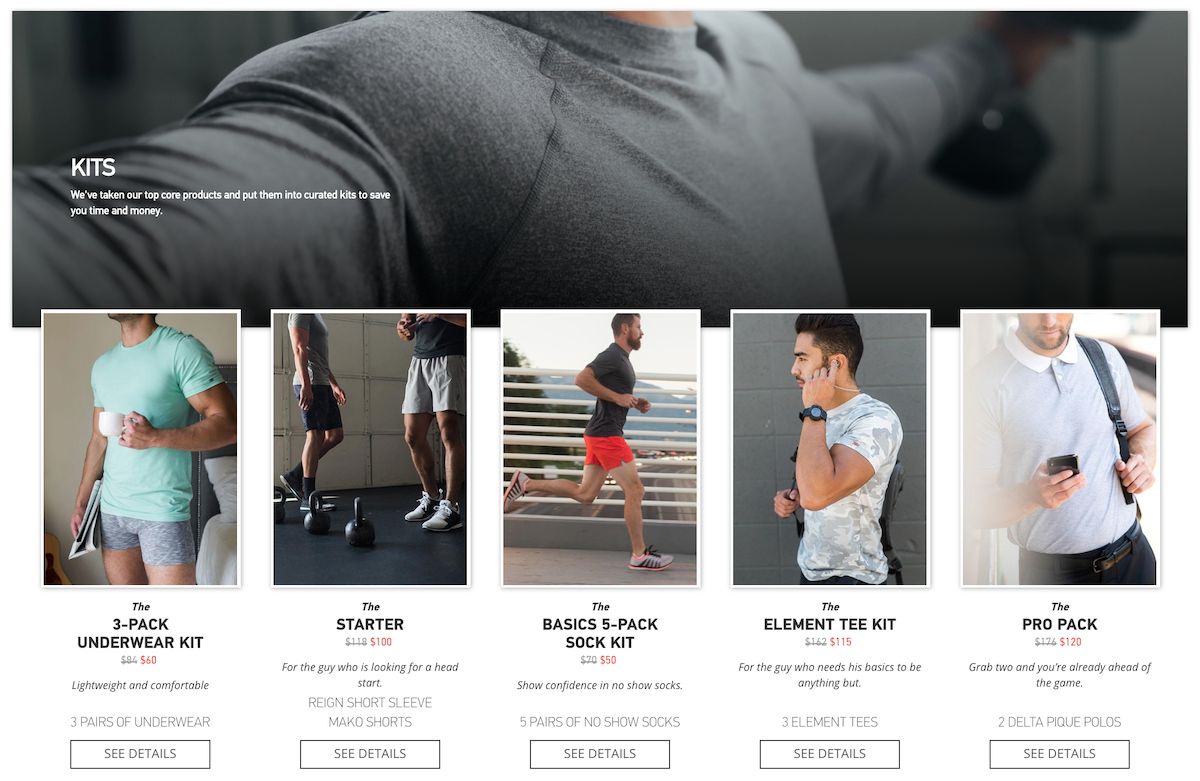
This strategy also offers customers a valued price for multiple products.
“The Kits allow us to maintain the cart sizes (more than one item) and is better than shipping out two separate orders,” explains Adam Bridegan, V.P. of Digital at Rhone. “We’ve also done gift with purchases at certain cart sizes to help increase AOV and thus help us with packing more into shipping boxes.”
To help you maximize your profit margins, Nick Winkler recently wrote about how to compete with Amazon when offering free shipping.
9. Automate Sales, Discounts, and Pricing
Automating promotions on your ecommerce site can save your fashion retail brand time and money. It can also increase conversions and retention rates.
Luxury hoodie brand Evy’s Tree uses Shopify Scripts to offer a variety of automated discounts and to repackage its pricing and merchandise. For example, the company improves customer experiences by:
-
Creating Scripts to automatically calculate and apply discounts in real-time at checkout, rather than using discount codes which can be hard for mobile customers to enter manually
-
Pairing Scripts up with, which helps merchants earn loyalty via the Shopify platform, by offering program participants flexible choices when redeeming their points including additional product discounts and free shipping
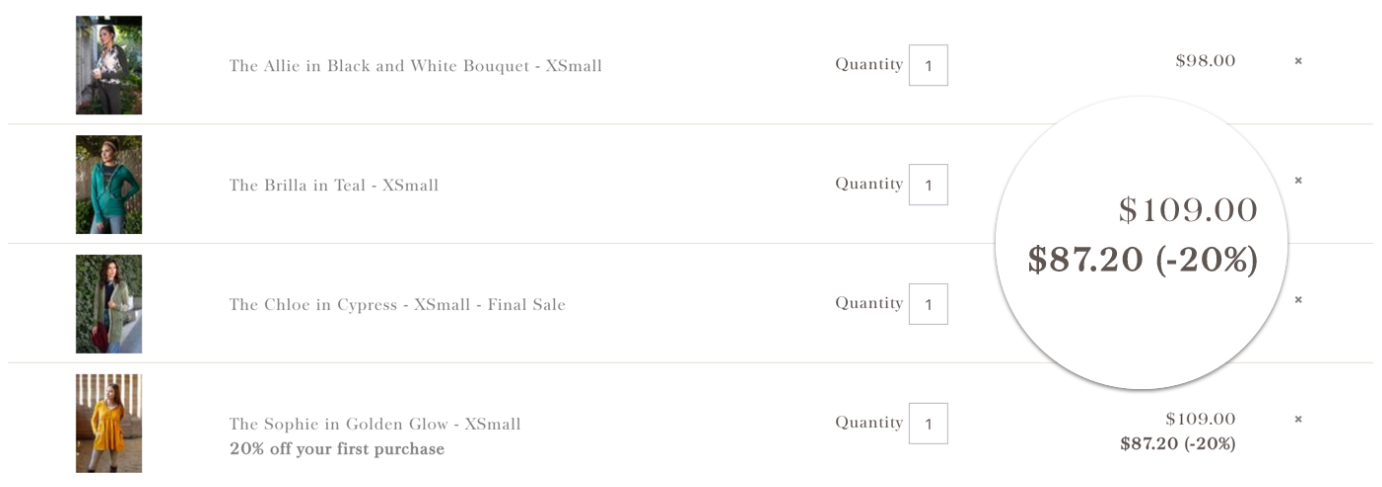
Since the company integrated rewards and automated discounts at checkout, Evy Tree’s retention rate, or the number of customers making more than one purchase, is over 50%.
“The brand has been successful because it is highly focused on reliability,” says Samantha Donohue, IT Manager at Evy’s Tree, “and we’re committed to offering a luxury experience with the minimal number of clicks necessary to check out.”
10. Upsell to Increase Average Order Values
Another way to get customers to spend more so you can justify offering free shipping is to use upselling tactics like Buy One, Get One (BOGO) at a discount, or free. Multi-million dollar mixed martial arts fitness brand MMA Warehouse uses Shopify Scripts to offer a free water bottle with the purchase of its apparel …
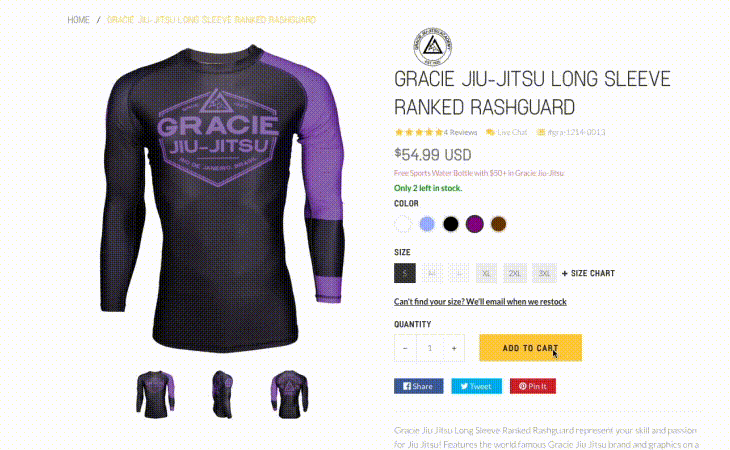
This tactic convinces customers who are still on the fence to make a purchase.
Offering tiered pricing based on spend thresholds is also a proven way to entice customers to spend just a little bit more for their perceived savings. For example, you might offer:
-
10% for $50
-
20% for $100
-
30% for $150
Premium sneaker brand Greats uses Shopify Scripts to dynamically show how deep the discount is when a customer adds another item to their cart. This strategy helps the company to increase average order values and encourages customers to buy multiples of the same product.
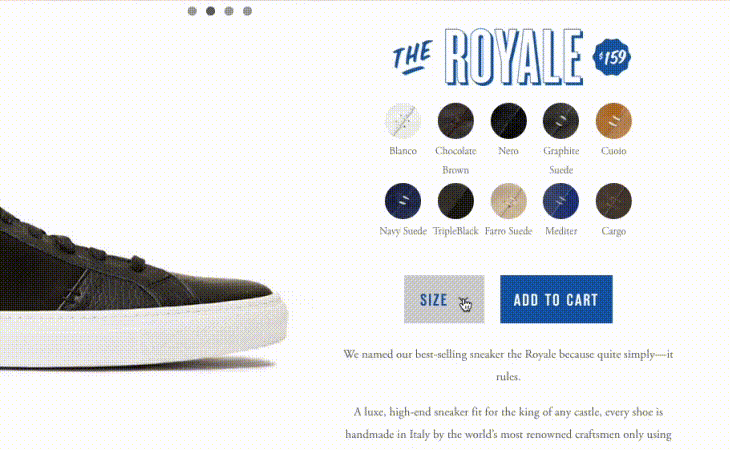
You can also add features like a countdown clock using Scripts to add a sense of urgency to your sale – as is illustrated in the Pura Vida bracelets example below:
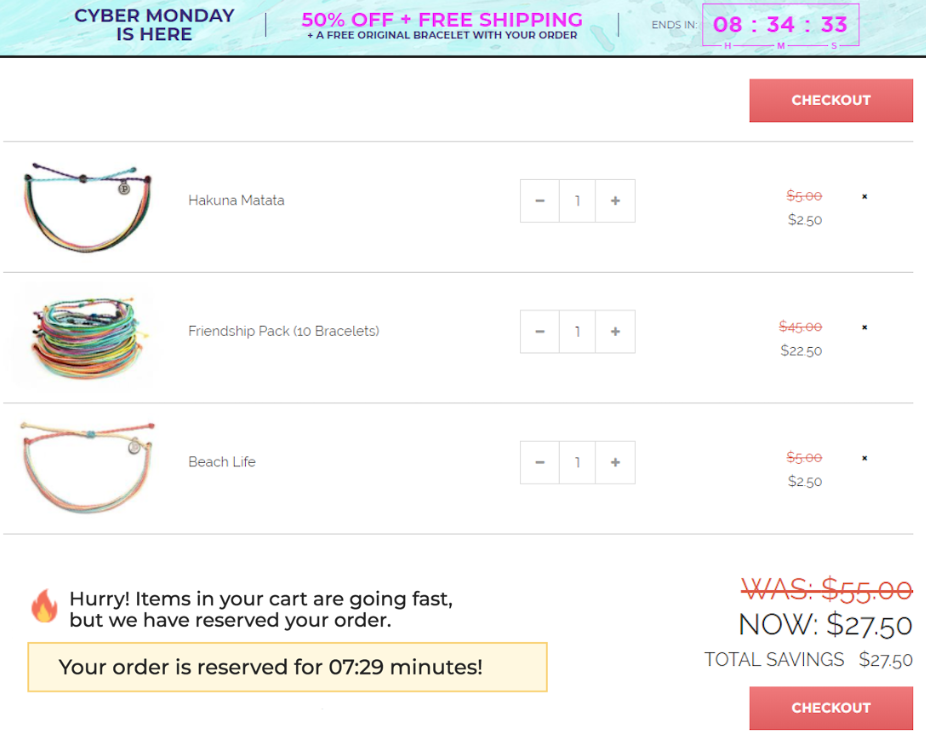
For additional examples on how to increase conversion rates in fashion retail using customizable upselling tactics, read this post on the Shopify blog.
Expand your upselling possibilities with these certified purchase option apps
The following upsell and post-purchase apps were hand-selected for their quality and ability to expand your checkout options. Check out these technologies that work seamlessly with Shopify and have been approved at our highest technology standard:
-
Rebuy: Personalized recommendations to upsell, cross-sell and buy products again.
-
Zipify One Click Upsell: Build upsell and cross-selling opportunities with purchase funnels.
-
Carthook Post Purchase Offers: Boost your AOV with real one-click post-purchase upsells.
-
Co-op Commerce: Easy cross-promotion, partnerships, upsell, surveys, and more.
11. Personalize Recommendations with AI
You can also use Artificial Intelligence (AI) to upsell by personalizing customer recommendations.
LeSportsac recently enlisted the help of Nosto — a Shopify Technology Partner that enables retailers to more easily deliver personalized shopping experiences – to use AI to drive hyper-targeted personalization.
Customer behavior data is now funneled to LeSportsac's marketing, merchandising, and design teams in real-time — enabling the site to display personalized offers, like a new product add-on suggestion.
“That ability to create personalized recommendations, follow customer history, create A/B tests, and really make smart business decisions based on what our customer behavior is has been a joy for us,” says Berly Isaak, Head of Global Marketing at LeSportsac.
LeSportsac’s AI push has driven ecommerce sales up 12% since its site overhaul, and its website click-through from email has increased by 30,000 per month.
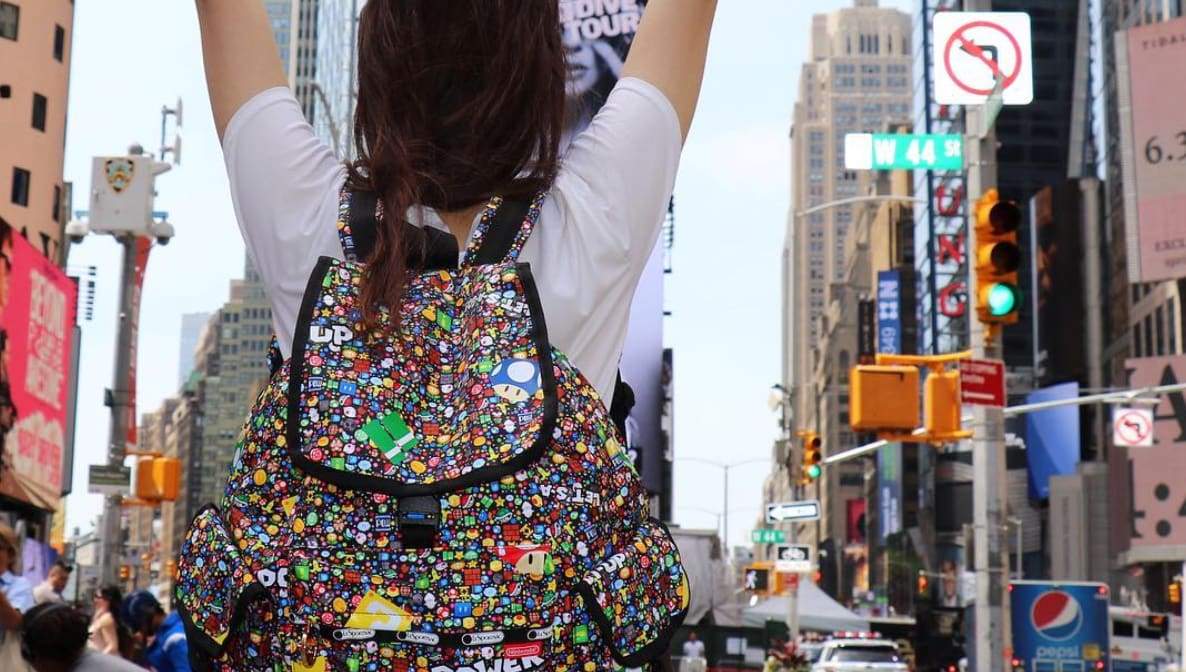
A month after replatforming, LeSportsac saw an increase in …
-
Conversion rates by 7%
-
Units per order by 37%
-
Average order values by 20%
12. Customize Checkout Experiences
Considering that customers will leave your site if it takes more than a few seconds to load, it’s not shocking that the majority of customers want a faster checkout experience these days.
Offering a guest checkout option if they don’t want to go through the laborious process of creating an account is just the tip of the iceberg.
Your customers want and expect the process to take just a few clicks — especially if they are using a mobile device to check out. Tools like Shopify Pay enable customers to opt-in to save their personal and shipping information to do so with just one tap or click.
And by using customizable tools like Shopify Scripts and integrating technology solutions created by Shopify Partners, many high-volume merchants and brands have taken the checkout experience to an even more personalized level …
Peepers Builds Trust with Checkout Customization
Returning to the Peepers example, the company customized the HTML on its Shopify checkout platform to provide a visually consistent experience and build trust with the consumer.
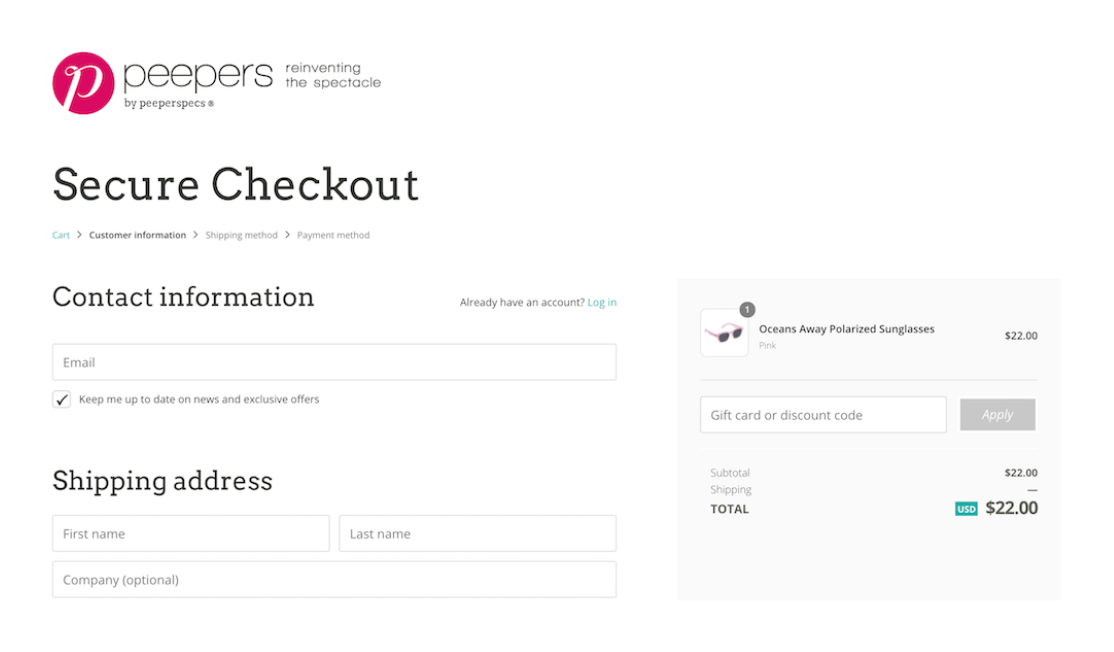
“The ability to customize with Shopify allows us to push it to the limit and create a custom checkout experience customers can trust and be confident that their personal and payment information is safe. It makes customers feel like the site is going to take care of them,” says Peepers ecommerce manager, John Hart.
After replatforming with Shopify, the company’s …
-
Organic traffic conversion rate has increased 25-30%
-
Average order value has increased 15-20%
For other ideas on how to customize the checkout experience with Shopify Scripts, dig into 15 Ecommerce Checkout Optimizations with Shopify Scripts to Automate & Maximize Conversions.
13. Enable Customers to Buy on Any Platform
Whether your business chooses to invest in a multi-channel or omni-channel retail strategy, you must enable customers to buy on the platforms where they engage with your brand the most.
Facebook Sales Channels Streamline the Checkout Process
With Mother’s Day 2017 fast approaching, high-end beauty brand L’Occitane launched a Facebook Sales Channel using Shopify in just 42 days.
The company focused on:
-
Enabling appropriate payment gateways so shoppers could check out on Facebook rather than being redirected to the L’Occitane website
-
Connecting the new channel with the L’Occitane warehouse so Facebook orders could be fulfilled with accuracy and expediency
“Consumers are adept at using social as a channel to explore and engage with brands,” says Serena Kolber, Sr. Director of Digital Acquisition and Brand Media at L’Occitane. “The next progression would be to purchase from them as well.”
After launching the Facebook Sales Channel, the company was able to cut out a click in the checkout process and significantly lift conversion rates during the mother’s day campaign — even after the company stopped running paid media.
Conversions also improved each time the company and its partner, VaynerMedia, optimized the creative in the ads, along with audience targeting.
Product Tagging on Instagram Increases Sales
After discovering that 15.6% of its sales were directly attributable to Instagram, multi-million dollar fashion brand and Shopify merchant ORO LA launched Shopping on Instagram to capitalize on its 436K following.
Instead of buying ads on the platform, the goal of Shopping on Instagram is to enable merchants to add tags to posts so users can “tap” to see product details and easily click through if they’re ready to buy.
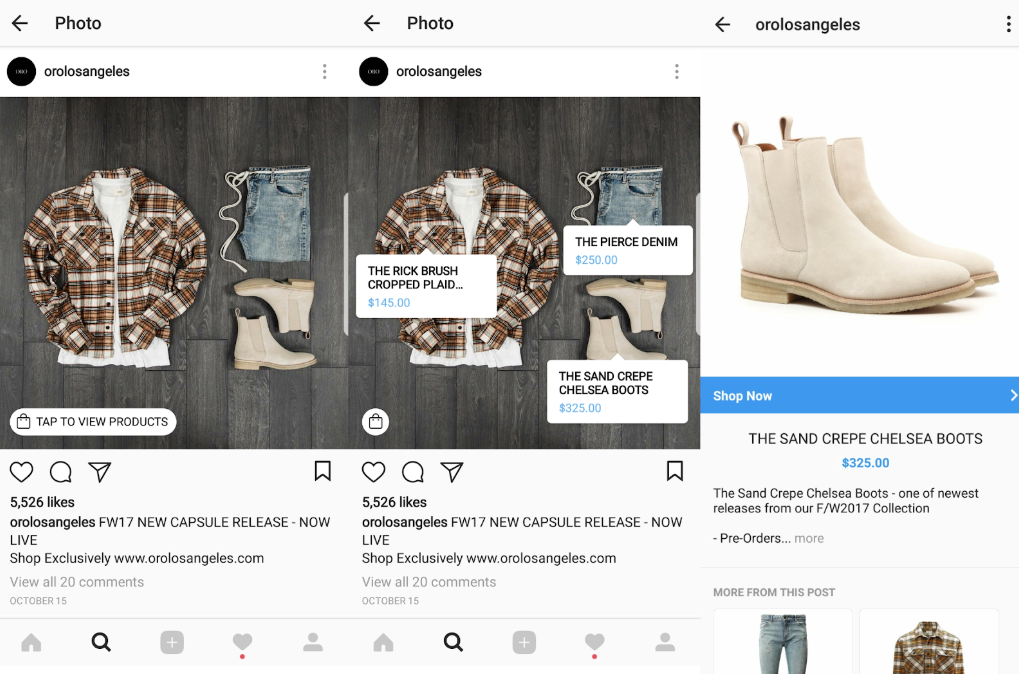
After launching the program, ORO LA saw a 29.3% lift in month-over-month revenue directly attributable to Instagram.
14. Integrate Your Social Advertising Strategy
Across their social-media properties, Cupshe mixes social content tailor-made for each network, advertising, and even chatbots:
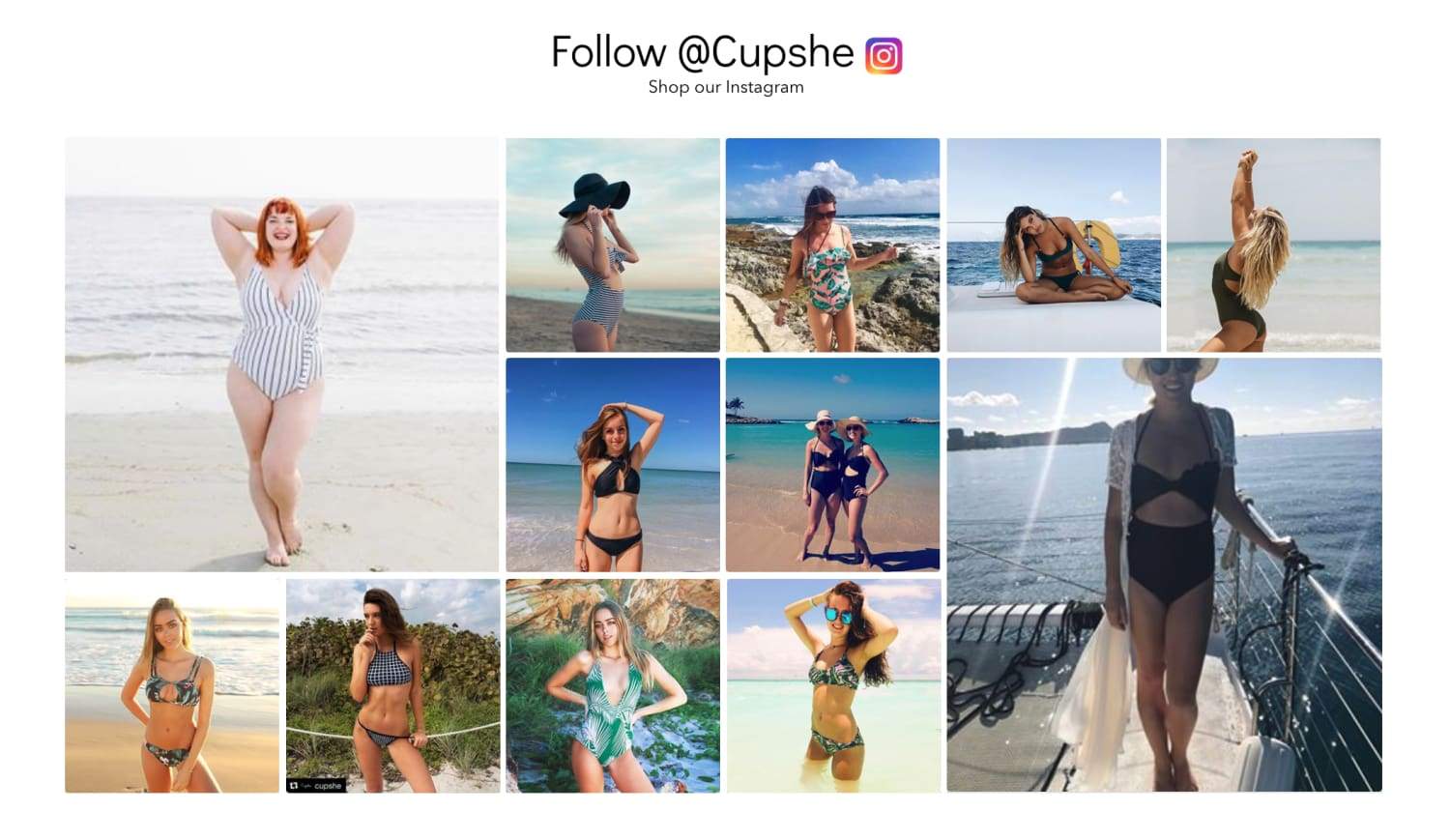
Cupshe mixes professional and UGC photos on their homepage’s Shop our Instagram section
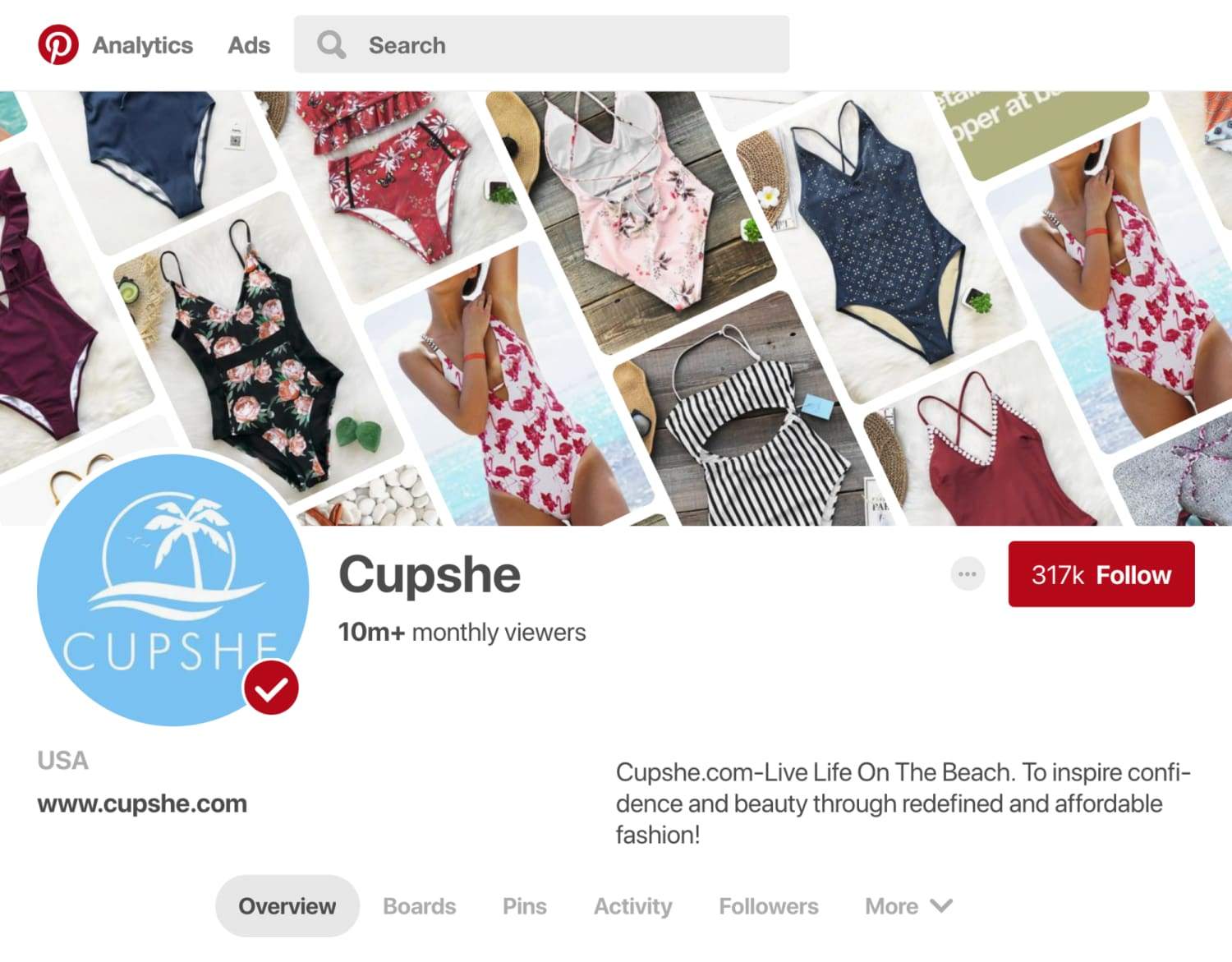
Cupshe creates and curates multiple boards that garner over 10 million monthly viewers on Pinterest
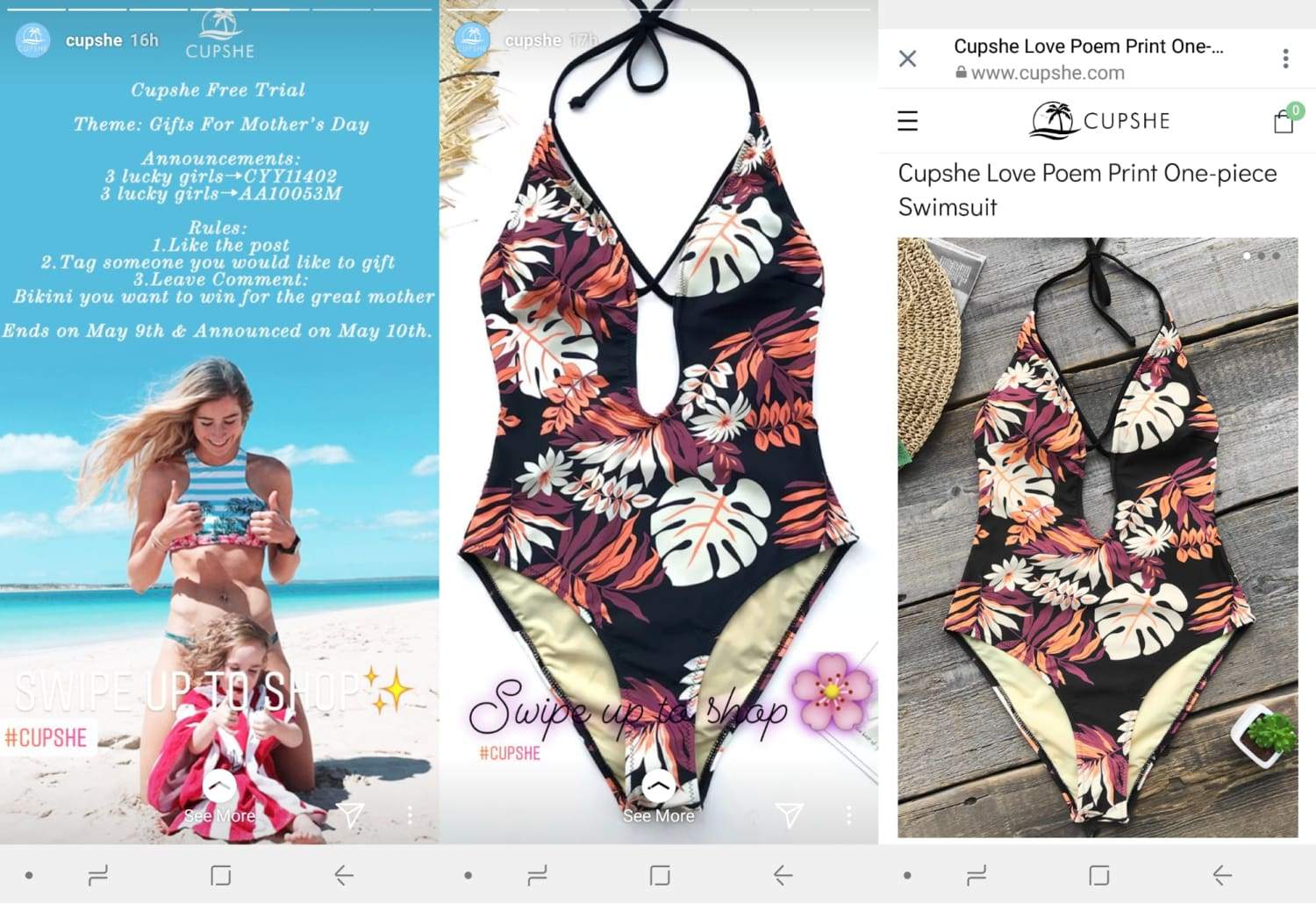
On Instagram, the company combines free trials, contests, influencer marketing, and direct sales through Stories
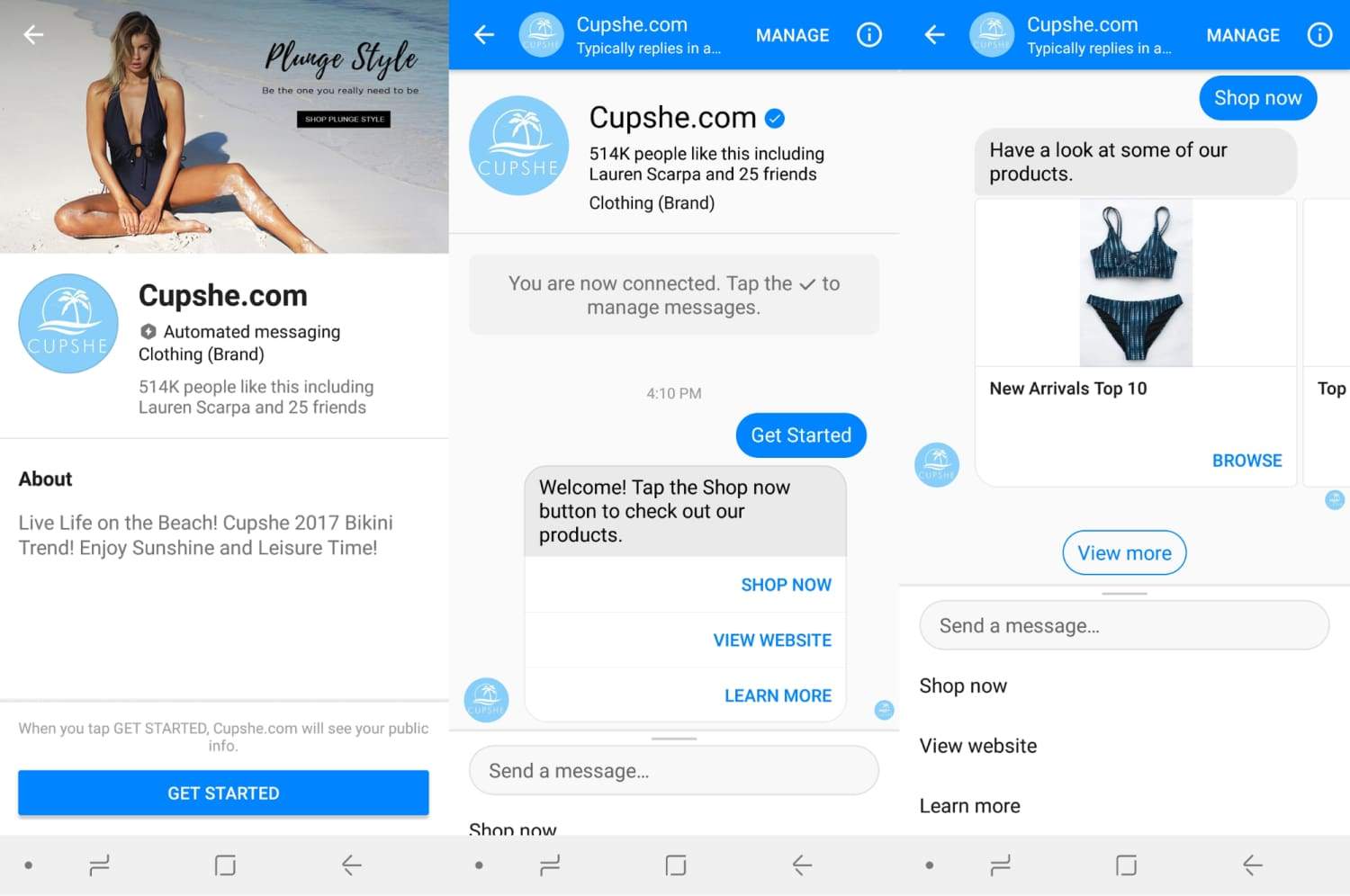
With over half a million fans on Facebook, Cupshe’s chatbot lets customers browse and shop conversationally
All told, Cupshe commands a combined social audience of 1.5 million. Even more impressive, 55% of their web traffic comes from a combination of social and search and approximately 35% of their revenue is directly or indirectly attributed to social.
15. Let Them Try Before Buying
ThirdLove launched its “Try Before You Buy” campaign in 2015 — enabling women to order and try their bras for free for 30 days. If they decided to keep their purchase, only then would they be charged.
ThirdLove’s campaign was a hit; conversion rates via ‘Try Before You Buy’ ads were up to three times higher than before the promotion.
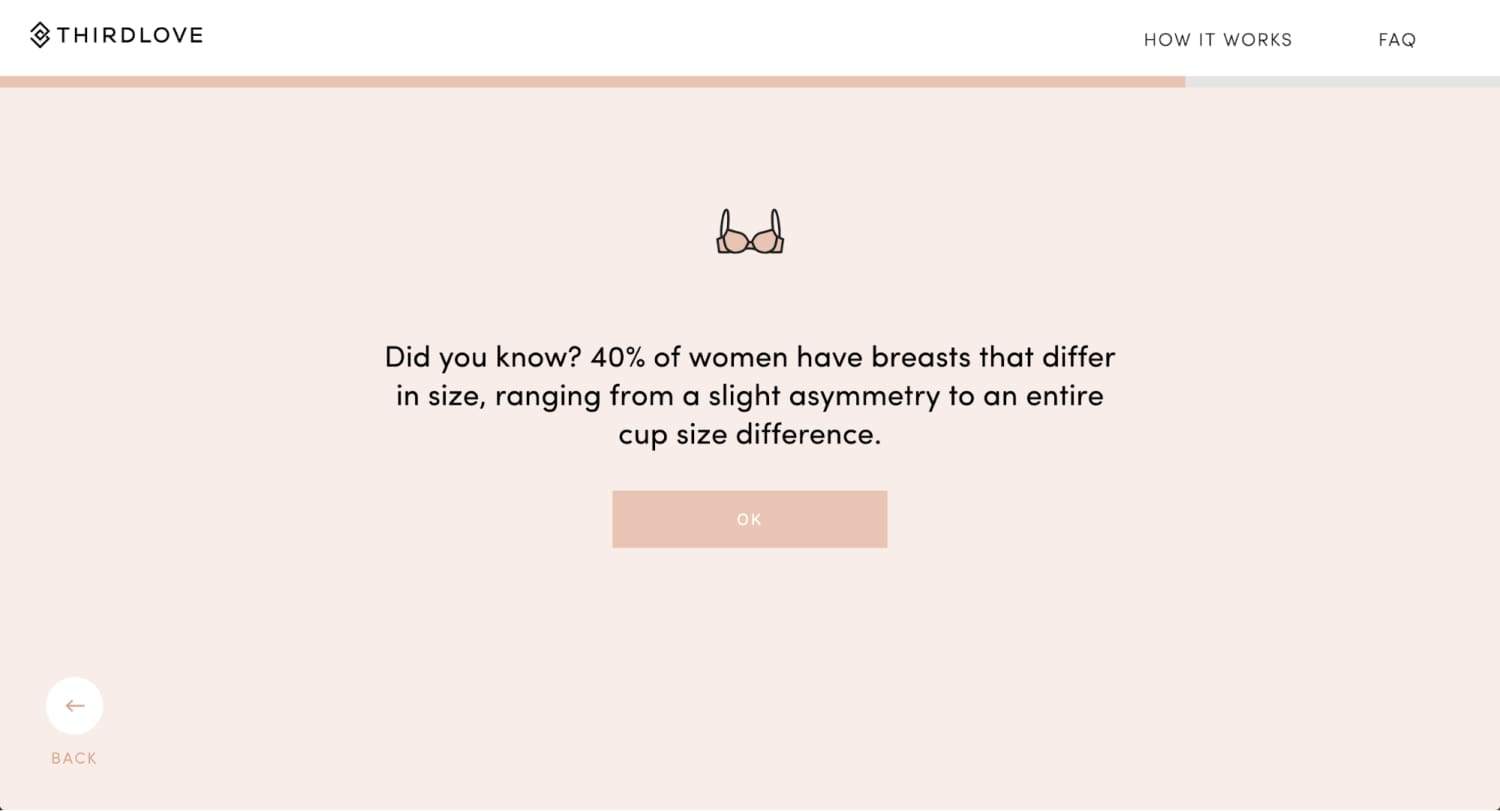
Try Before You Buy is all about guidance and information, not pushy sales tactics
Since the launch three years ago, 750,000 women have participated in the “Try Before You Buy” program. Retention rates for products ordered through the promo are as high as 70%.
Just two years after partnering with Shopify, ThirdLove posted impressive metrics:
-
Revenue up 347% year-over-year in 2017
-
Returning customer rate up 62% year-over-year in 2017
Final Thoughts on Fashion Ecommerce Conversion Rates
Looking good and making a positive first impression takes time and effort.
Your favorite clothes and accessories in your closet likely required many hours to shop around for the right pieces, find your ideal colors and sizes, and update or throw out items as new styles became popular.
Likewise, as new ecommerce technologies emerge, and user behaviors and preferences evolve in the future, so too must your site.
Insights for Today and Tomorrow
For an executive summary of online fashion, download The Fashion and Apparel Industry Report.
Inside, you’ll get one-pagers detailing …
-
Comprehensive data on the opportunities and threats
-
Business spotlights for insights on growth
-
A checklist for selecting the right fashion platform
Read more
- Omnichannel Customer Experiences: How to Sell Where Your Customers Buy
- Why You Should Consider Ecommerce Subscriptions for Your Online Business
- Native Advertising for Ecommerce: From Content Discovery to Scaling Sales
- Ecommerce Usability 101: Are You Making it Difficult For Visitors to Purchase?
- 5 Easy Tips For Getting Started With Conversion Rate Optimization
- Microcopy: Near Invisible Text That Converts Visitors to Customers (Even When They Don’t Read It)
- 10 Halloween Marketing Campaigns from Wickedly Profitable Ecommerce Brands
- Multi-Channel Customer Acquisition: 7 Tips from $3.7M+ in Ad Spend
- B2B Ecommerce Features for Acquiring, Selling & Retaining Customers
- What Conversion Experts Wished You Knew About Optimization




